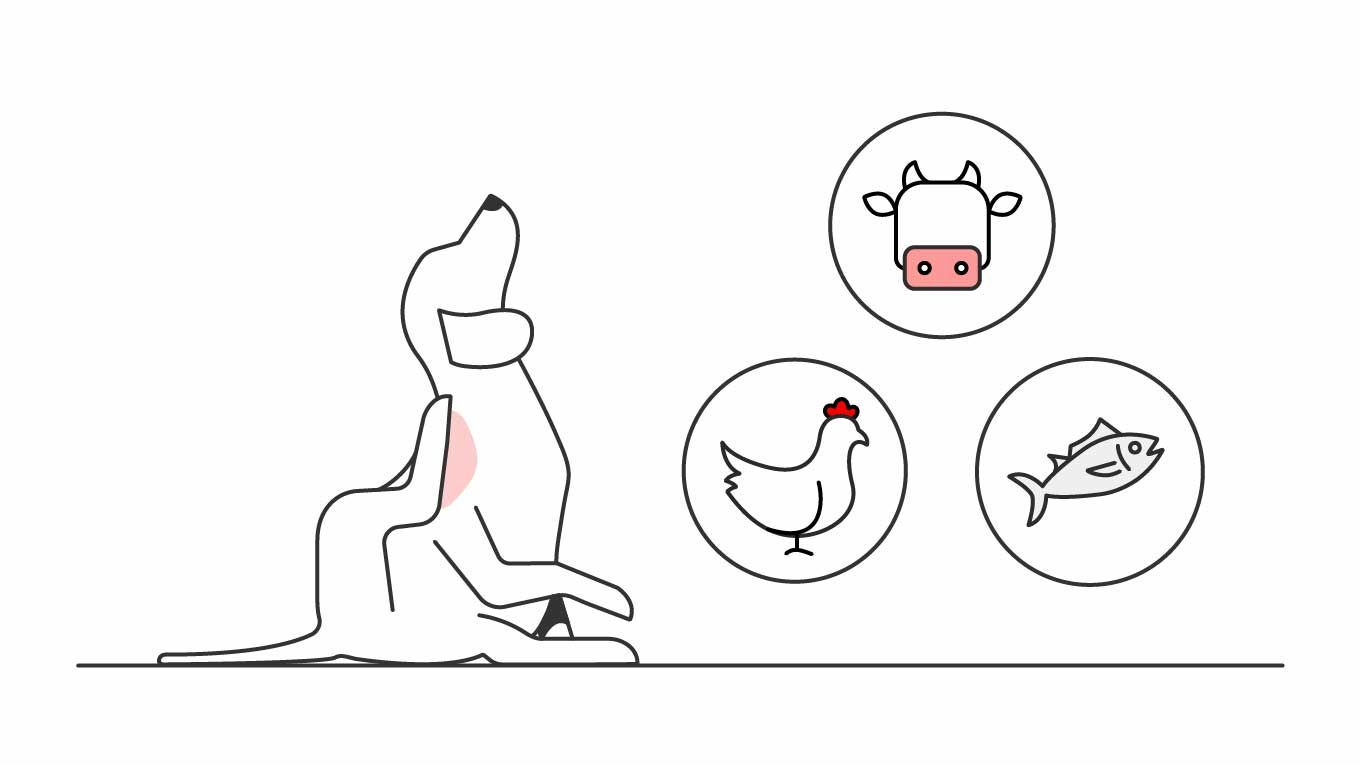Spotting the Signs of Dog Food Allergies

Sometimes, a dog’s immune system mistakes certain molecules, typically a protein in food for something harmful, like bacteria or a virus.
To mount a defense against these molecules, the immune system releases inflammatory mediators, and these mediators cause the skin and dietary issues typically associated with an allergic reaction in dogs.
Why Do Dogs Develop Food Allergies?
Several risk factors increase the likelihood of a dog developing a food allergy, including an allergic disease, a genetic predisposition, a weakened immune system, or feeding a diet containing poorly digestible proteins.Unfortunately, new food allergies can develop at any time, even in dogs with no prior history of allergies or previous signs.
It’s important to know the signs of dog food allergies and be vigilant for the signs right, from their first few months until later life.
Are Some Ingredients More Likely To Cause an Allergy?
Yes. A 2016 study1 found the most frequently reported allergenic protein sources to be beef, chicken and lamb.

These ingredients are regularly used in diets for dogs and contain large intact protein molecules that have a higher likelihood of triggering an allergic response.
Other protein sources, carbohydrates, and food ingredients can all cause food allergies, so a vet will need to conduct an elimination diet trial to determine the exact cause of a dog’s allergy.
What Are the Typical Dog Food Allergy Signs?
Skin issues and gastrointestinal upset are the typical indicators of a food allergy, with the most common signs being:
- Itching
- Skin infections
- Inflammation
- Redness
- Sores and rashes
- Vomiting
Diarrhea
Based on the level of the allergic reaction, you may see several of these signs in your dog:
Face:
Look out for hair loss and redness around your dog's eyes, muzzle and chin.Mouth:
You may notice your dog has mouth ulcers.Ears:
The ears of your dog may be red with a waxy discharge and could have an unusual odor.Skin:
Red skin could be a sign of a food allergy. Scales and crusts on their skin may also indicate a secondary infection.Coat:
Their coat may have bald spots and brown discoloration from excessive licking.Paws:
Your dog's paws may show signs of swelling, redness, brown discoloration and have a strange odor.Gastrointestinal:
Recurrent vomiting, diarrhea, and flatulence could also indicate an allergy.Behavior:
Dogs showing some of the signs mentioned above may also chew their feet and pads, lick themselves excessively, and scratch themselves either with their paws or by rubbing up against objects.
What Should I Do if I Suspect My Dog Is Allergic to Certain Foods?
If your pet is showing any signs of a dog food allergy you should take them to the vet as soon as possible.Left untreated, a food allergy can have a serious impact on their health and overall quality of life. Persistent scratching and chewing, for example, can cause a dog to develop open wounds which are painful and risk infection.
What Are the Most Common Dog Food Allergy Management Options?
A change in diet is often recommended for a dog experiencing a food allergy and there is a range of options your vet may suggest, including diets made from novel or hydrolyzed proteins.These diets contain less frequently used sources of protein or include protein molecules that have been broken down to reduce the chances of an allergic response. They often include nutrients to support a dog’s skin and digestive system.
To achieve a diagnosis, an elimination diet trial is typically recommended, which involves putting a dog on a hydrolyzed protein diet for several weeks before reintroducing possible allergens to test for a response.
You can learn more about elimination diet trials and the role of nutrition in our article nutrition for dogs with food allergies.
Why Is an Elimination Diet Trial Important?
Some pet owners may find it tempting to switch their dog onto a store-bought novel protein or vegetarian diet rather than undertaking an elimination diet trial, however, this may not be the best option for the dog.Retail dog foods often contain multiple sources of protein and carbohydrates, which may be hard to identify from the label. They may also have been manufactured in environments without cross-contamination protocols.
It’s also possible that the dog isn’t suffering from a food allergy. Atopy, an allergy to something in the environment like dust or pollen, is far more common in dogs than food allergies, and yet the signs are indistinguishable from one another.
An elimination diet trial is often the most reliable way for a vet to identify whether the cause of an allergy is food, atopy, or something else.
If you’d like to read more, see our section on Environmental Allergies.
References:
1 Mueller R.S., Olivry T, Prélaud P. Critically appraised topic on adverse food reactions of companion animals (2): common food allergen sources in dogs and cats. BMC Vet Res. 2016; 12:9Related articles
Like & share this page